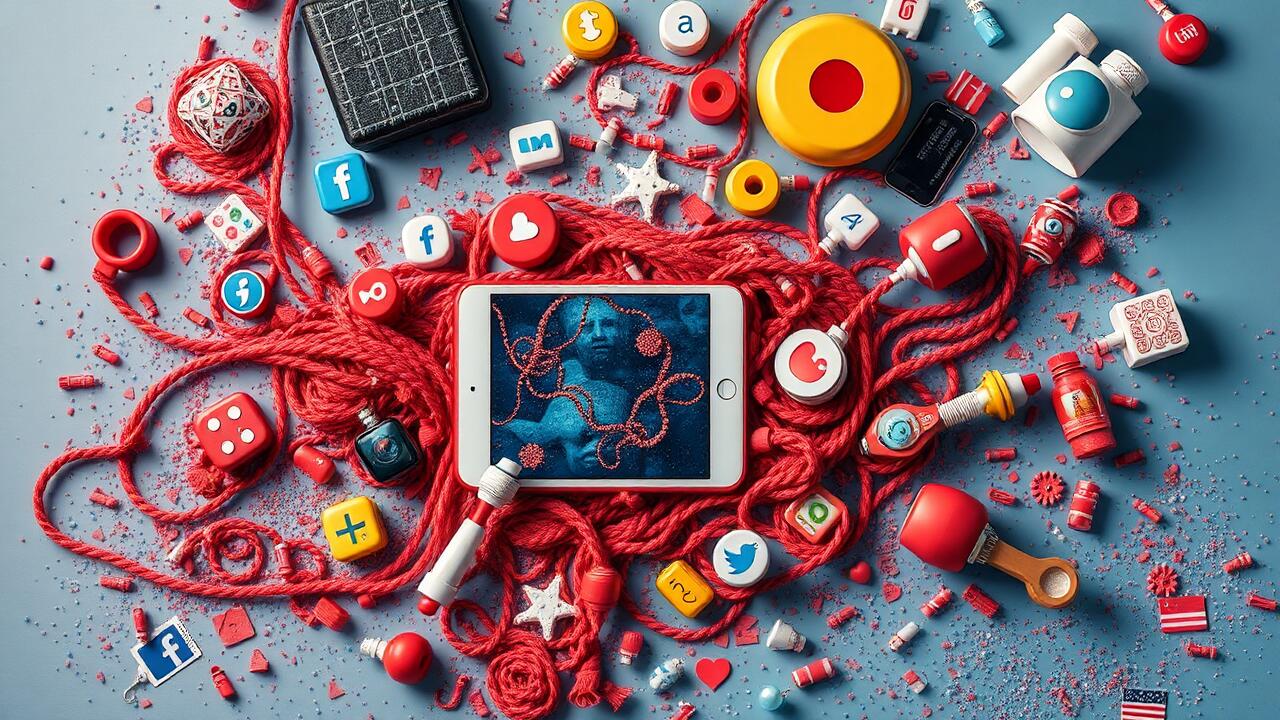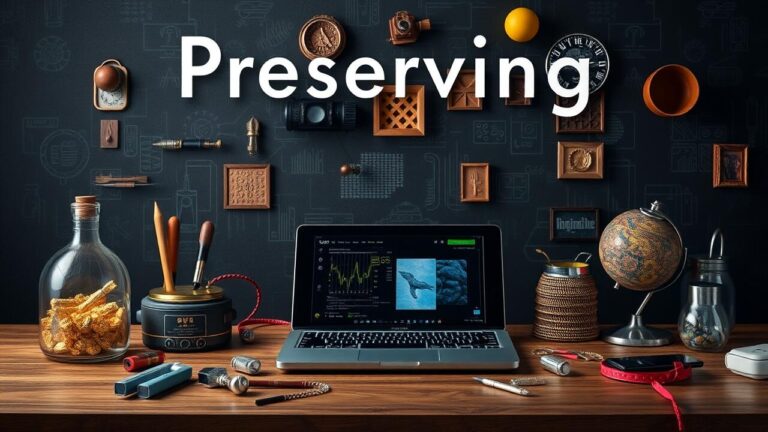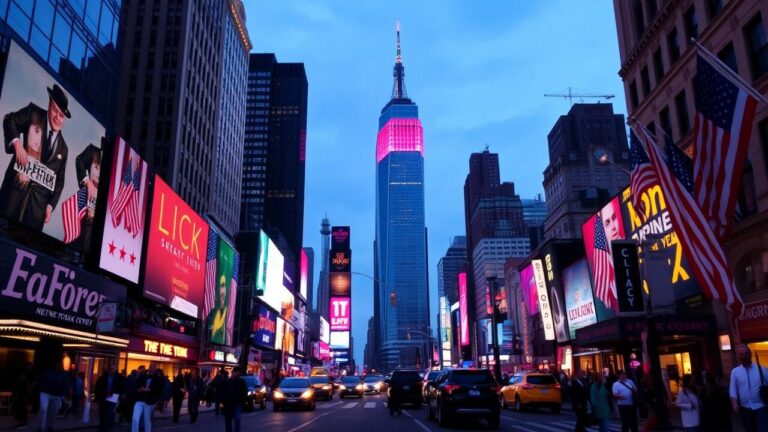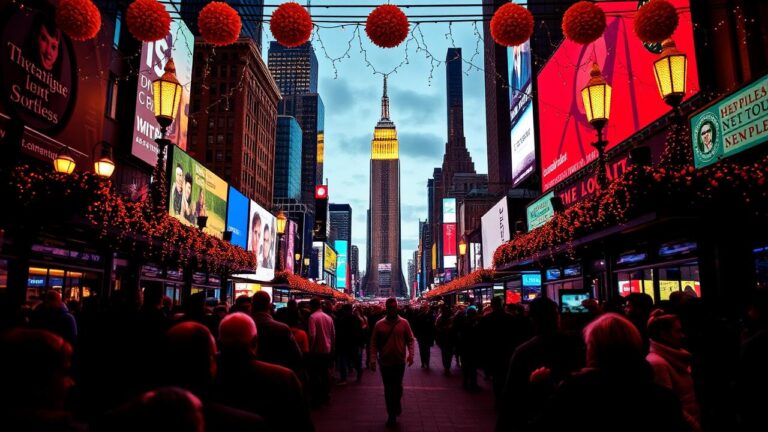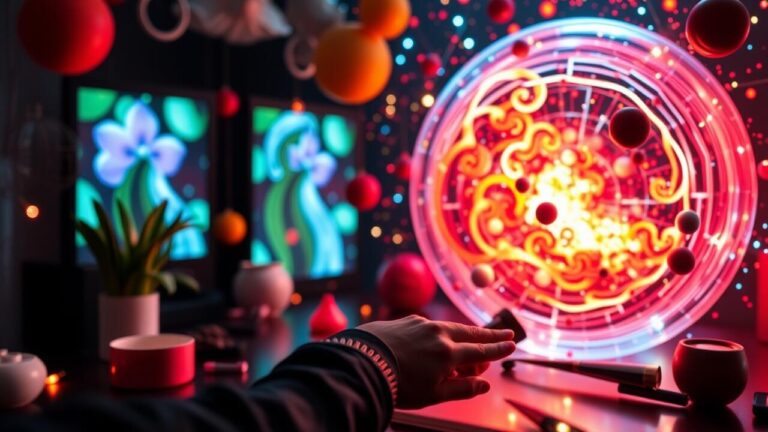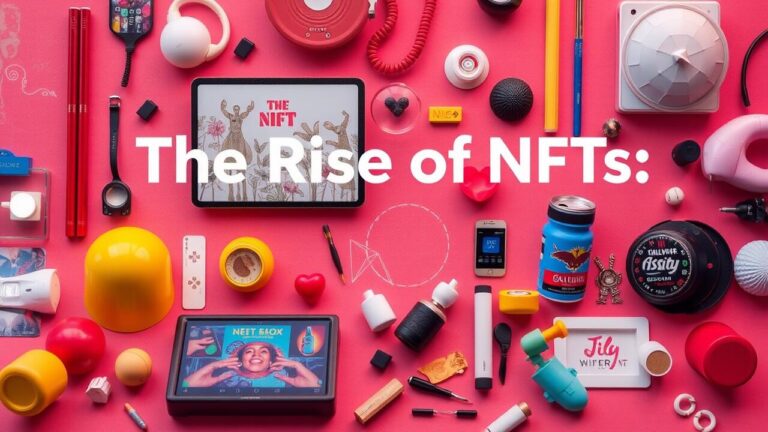The Influence of Social Media on the Creation and Consumption of Digital Art
Table Of Contents
Exploring the Influence of Social Media on the Creation and Consumption of Digital Art
Key Takeaways
- The effect of online platforms on the development and appreciation of digital artwork; the function of online platforms in promoting digital artwork.
- The influence of online platforms on the production of digital artwork.
- The appreciation of digital artwork in the era of online platforms.
- Financial consequences of online platforms on digital artwork.
- Obstacles encountered by digital creators in an online platform environment.
The Influence Of Social Media On The Creation And Consumption Of Digital Art | The Role of Social Media in Digital Art Promotion
Social media plays a pivotal role in the promotion of digital art, reshaping how artists create and share their work. The influence of social media on the creation and consumption of digital art is evident through the rise of platforms that foster community engagement, allowing content creators to showcase their digital artwork directly to audiences. Social media sites function not only as exhibition spaces but also as essential tools for social media marketing, where artists can run targeted campaigns to reach potential buyers and fans. With the integration of new media art into these platforms, artists are continually inspired by trends and peer feedback, leading to innovative approaches in their work. However, the allure of these environments can also contribute to social media addiction, where the constant need for engagement and validation impacts creative processes and consumption habits. Thus, the dynamic ecosystem of social media profoundly influences both the creation and appreciation of digital media content.
The Influence of Social Media on the Creation and Consumption of Digital Art | Platforms Transforming Digital Art Exposure
Social platforms have revolutionized how artists create and share their works of art. The Influence of Social Media on the Creation and Consumption of Digital Art is evident in the rise of new media practices such as digital painting and interactive art. Artists often leverage media campaigns to reach wider audiences, allowing pop art and other styles to thrive in the digital realm. This transformation reshapes not only individual artworks but also the entire art market, enabling diverse voices to contribute to social commentary through their pieces.
The shift from traditional print media to digital formats has expanded opportunities for visibility and engagement. Artists can showcase their artwork to global audiences, making their creations accessible in ways that were not possible before. The Influence of Social Media on the Creation and Consumption of Digital Art facilitates connections between creators and audiences, fostering a dynamic environment where feedback and collaboration enhance the creative process. This interconnectedness significantly impacts how works of art are both appreciated and consumed in contemporary society.
Case Studies of Successful Artists on Social Media
Successful visual artists have harnessed the influence of social media on the creation and consumption of digital art to engage a broader audience. Through platforms like Instagram and TikTok, these artists showcase their work and creative processes, often blending aesthetics with storytelling. Contemporary arts have seen a shift as creative individuals experiment with computer-generated imagery, capturing the attention of users who appreciate the fusion of technology and creativity. The reach of social networks allows these artists to share their art prints widely, transcending traditional gallery spaces and inviting feedback from global communities.
Case studies of prominent artists reveal various strategies in utilizing social media effectively. They cultivate a strong online presence, actively engaging with followers to foster a sense of community around their visual art. These creative processes often inspire trends within the arts, as emerging talents draw influence from established artists’ work. The consumption of digital art has become more interactive, with audience members playing a role in shaping the narrative and aesthetics of art in the digital age. This dynamic relationship emphasizes how the influence of social media has redefined the landscape for both creators and consumers.
Social Media’s Impact on Digital Art Creation
The impact of social media technology on the creation and consumption of digital art is profound, reshaping how artists express their imagination and connect with audiences. Platforms like Twitter and Instagram serve not only as galleries for visual arts but also as catalysts for collaboration among artists and creative agencies. The rise of internet celebrities has further amplified the reach of emerging creators, transforming how net art is disseminated and appreciated. The influence of social media on the creation and consumption of digital art has led to new trends, with artists increasingly engaging in real-time feedback, allowing for a dynamic dialogue that enriches their work. This shift underscores how social media usage encourages a participatory culture, redefining traditional pathways that once relied heavily on physical art galleries.
Collaborative Opportunities in Virtual Spaces
Virtual spaces have become central to the collaborative creation of digital art. The influence of social media on the creation and consumption of digital art is evident as artists connect through various social media sites. These platforms facilitate partnerships, allowing artists to engage with each other’s work and ideas. Social media serves as a stage for showcasing this collaborative spirit, where creative minds from diverse backgrounds come together to drive innovation within the digital art world. As social media users contribute their unique insights, they fuel the digital art revolution and foster a vibrant digital culture.
Collaboration in virtual spaces also enhances visibility for artists through social media performance. Artists leverage their social media presence to share their collaborative projects, reaching wider audiences thanks to social media algorithms that prioritize engaging content. By participating across various social media domains, artists not only expand their networks but also tap into new markets for their digital art. Such collaborations can lead to unique works that capture the essence of the digital culture, ultimately enriching the overall landscape of digital media and making a lasting impact on how art is created and consumed.
Inspiration and Trends Emerging from Online Communities
Online communities have become vital for digital artists seeking inspiration and trends. The influence of social media on the creation and consumption of digital art is evident as it introduces new styles and techniques regularly. Social media plays a crucial role in forming a vibrant digital art community where artists can share their work and receive real-time feedback. This environment encourages experimentation and innovation, allowing digital artists to explore their creativity in ways previously unimaginable. As social media companies strive to enhance user experiences, they offer various tools and features that support artistic expression, making art consumption more accessible.
Emerging trends often stem from the interactions happening in these online spaces. Social media demands engagement, prompting artists to create content tailored to audience preferences. As a result, unique movements and aesthetics can quickly become social media sensations, gaining traction across various platforms. Artists leverage these channels to showcase their pieces, fostering a sense of belonging within the community. The rise of challenges and collaborations on social media breaks traditional barriers, allowing digital art to stand out in a crowded marketplace while providing invaluable support from fellow creators.
The Consumption of Digital Art in the Age of Social Media
The rise of social media channels has profoundly transformed the landscape for digital artists and their audiences, reshaping how digital artworks are consumed. As digital artists showcase their digital creations across various platforms, they cultivate a community of social media fans eager to engage with their work. The influence of social media on the creation and consumption of digital art is evident as users shift from traditional galleries to experiencing art online through screens. This transition allows for immediate feedback and interaction, granting digital artists options to refine their craft based on real-time responses. Digital works are now often shared and discussed through social media updates, creating a dynamic environment where art drops and viral trends emerge, reflecting the evolving digital world and the challenges posed by fake media.
Changing Habits: From Galleries to Screens
The shift from traditional galleries to digital platforms has significantly altered how audiences engage with art. The Influence of Social Media on the Creation and Consumption of Digital Art fosters a culture where digital technology allows artists to showcase their work directly to viewers. This transition has led to the rise of impressive digital galleries and online art platforms that highlight digital art collections. Audiences now have access to intriguing digital artworks that reflect post-internet aesthetics and popular art movements, transforming their viewing habits from passive observation to active engagement.
This new media era encourages artists to explore expressive media and interactive art experiences that resonate with a broader audience. Digital mediums allow for the rapid sharing of artistic content, creating a dynamic environment for both creators and consumers. As art becomes increasingly accessible, viewers can discover diverse artistic expressions that were previously confined to physical spaces. This evolution highlights the role of social media in shaping habits and preferences, revealing a profound impact on how digital art is consumed and appreciated.
- Artists can reach global audiences without geographic limitations.
- Social media platforms serve as important tools for marketing and networking.
- Digital art can be shared and enjoyed in real-time through live streaming and interactive sessions.
- Viewers can engage with art through comments and shares, fostering community discussions.
- Access to a vast array of art styles and movements encourages exploration and discovery.
- The transition to screens allows for innovative formats like virtual and augmented reality experiences.
- Accessibility of digital art can democratize art consumption, reaching diverse demographic groups.
The Role of User Engagement and Feedback
User engagement plays a pivotal role in shaping the landscape of artistic creation within the digital age. Artists harness the power of digital platforms to showcase their work, receiving immediate feedback from online art communities. This interaction not only influences the direction of their art creation but also enhances the digital presence of their portfolios. The act of sharing artistic creation videos and digital objects fosters a communal environment that encourages growth and experimentation. As artists engage with audiences, they find inspiration and validation, which ultimately affects their approach to digital manipulation and the overall quality of their artistic creation.
Feedback from followers and peers serves as a catalyst for innovation in the online art market. As artists navigate this digital environment, they adapt their techniques and styles in response to the preferences and criticisms of their audience. The digitalization of art democratizes access, leading to a vibrant exchange of ideas that transcends geographical boundaries. This dynamic relationship between creators and spectators highlights The Influence of Social Media on the Creation and Consumption of Digital Art. Engaging with viewers can transform a piece into a trending digital form, showcasing the collaborative potential that thrives within these modern artistic channels.
Economic Implications of Social Media on Digital Art
The digital realm has transformed the art industry significantly, particularly through the influence of social media on the creation and consumption of digital art. Artists now leverage online art platforms to showcase their digital illustrations, effectively reaching a wider audience of art enthusiasts. With incorporated media technologies and advanced digital tools, creators can engage directly with their audience, fostering a sense of community within the digital space. This shift allows for innovative media-driven campaigns that promote modern art, while art organizations adapt to new trends and dynamics within the art world. Technology offers artists unique monetization opportunities, reflecting the changing economic landscape shaped by social media influence.
| Implication | Description | Examples |
|---|---|---|
| Increased Accessibility | Social media opens up platforms for artists to display their work globally without traditional barriers. | Instagram, DeviantArt |
| Direct Engagement | Artists can directly interact with their audience, receiving feedback and support. | Live streams, Q&A sessions |
| New Revenue Streams | Social media allows the sale of art and merchandise directly to consumers. | Prints, commission work |
| Promotion of Art Movements | Emergence of digital art trends and movements led by online communities. | #ArtChallenge, NFT trends |
Monetization Strategies for Artists
The rise of social media has transformed the art market by providing artist-users with new avenues for monetization. Through platforms like Instagram and Patreon, artists can showcase their work and engage directly with their audience. This direct interaction fosters a creative persona that can attract art critics and collectors alike. Artists can sell everything from nature art posters to exclusive access to their art projects, enriching the artistic experience for both creators and consumers. The influence of social media on the creation and consumption of digital art has also led to the emergence of various art resources that help artists navigate the complexities of online sales.
Utilizing digital painting software and effective publicity strategies, artists can craft tailored content that resonates with their followers. The transition from traditional gallery exhibitions to online showcases reflects the changing landscape of the visual art market. Artists must adapt their art creation process to fit this new model, often incorporating feedback and trends identified through social media channels. By leveraging these platforms, artist-users can cultivate a loyal following and explore diverse monetization strategies that enhance their visibility and financial sustainability in an increasingly competitive environment.
Crowdfunding and Support Through Online Platforms
Crowdfunding has become a vital component of the digital landscape for artists seeking financial support for their creative endeavors. Platforms like Kickstarter and Patreon enable electronic artists to present their artistic creations directly to audiences. These specific media facilitate interaction with supporters, allowing patrons to fund projects that resonate with them. This new approach fosters a unique connection between creators and their audience, influencing how artistic development occurs. The art market disruption caused by these crowdfunding initiatives empowers creative voices to explore innovative artistic mediums and interactive artworks, expanding the possibilities of art marketing today.
Support through online platforms allows artists to cultivate diverse revenue streams while engaging with their fans more intimately. Crowdfunding creates opportunities for artists to showcase their work in online art exhibits, reaching a broader audience than traditional galleries. This shift encourages different creative forms and artistic expressions, ultimately enriching the art community. By leveraging digital systems and social media, artists can adapt to changing consumption patterns while gaining insights into emerging trends in their fields. The Influence of Social Media on the Creation and Consumption of Digital Art has undoubtedly transformed how artists monetize their work, fostering a vibrant ecosystem for artistic experimentation and collaboration.
Challenges Faced by Digital Artists in a Social Media Landscape
Digital artists navigate a complex landscape influenced by social media, where the balance between creativity and commercialization often blurs. The Influence of Social Media on the Creation and Consumption of Digital Art has led to the emergence of innovative art forms that thrive in digital spaces. Artists must adapt their work for online platforms, shifting from traditional presentations in galleries to immersive art experiences designed for screens. As they attempt to gain visibility, competition within the global art market intensifies, pressuring creators to produce impactful content that resonates with audiences. The art business continuously evolves, and featured artists find themselves in a dynamic digital marketplace that requires constant engagement and adaptability. Challenges such as copyright issues and the need for authenticity can complicate the journey for creatives striving to carve out their niche in the expansive online art ecosystem.
Intellectual Property Concerns
The rise of digital services and social media has transformed how viewers and art lovers engage with artistic works, but it has also raised significant concerns regarding intellectual property. Many artists find their creative output at risk of being misappropriated or plagiarized. They often share their artwork in online spaces to promote their artistic innovations and attract audiences, yet this openness can lead to unauthorized use of their artistic contributions. Protecting one’s creative work has become increasingly complex in an environment that thrives on sharing and quick access to various art forms.
Art education plays a crucial role in addressing these issues as digital artists learn how to navigate the challenges of intellectual property in their creative projects. Discussions about copyright and ownership become essential in understanding the dynamics of artistic collaborations and the sharing culture prevalent on social media. As the medium evolves, artists must find a balance between leveraging the influence of social media on the creation and consumption of digital art and safeguarding their rights over their creative responses and works.
- The importance of understanding copyright laws and how they apply to digital art.
- Strategies for artists to watermark or trademark their artwork.
- The role of art education in teaching students about intellectual property rights.
- The effect of social media algorithms on the visibility and ownership of artistic works.
- Platforms available for artists to register and protect their intellectual property.
- The impact of digital piracy on artists’ income and reputation.
- Encouraging collaboration while maintaining clear agreements on ownership and usage rights.
Conclusion
The Influence of Social Media on the Creation and Consumption of Digital Art has reshaped the art community in profound ways. Artists and enthusiasts alike engage in vibrant creative debates, sharing insights that ignite new ideas and trends. As art sales increasingly transition from traditional galleries to online platforms, the dynamics of how digital art is both created and consumed are evolving. This transformation not only fosters creative hobbies but also builds a more interconnected community of artists and supporters, amplifying voices that might have otherwise gone unheard. The ongoing dialogue within these digital spaces highlights the power of social media in navigating the complexities of the modern art world.
FAQS
How do social media technologies influence the presentation and consumption of digital art within the global art industry?
Social media technologies play a crucial role in how artists share their work of art with a wider audience. These platforms support digital sharing, allowing artists to showcase computer generated imagery and other forms of digital art drop. Through effective social media campaigns, a creative agency can elevate the visibility of digital art stands and connect them with potential buyers in art galleries or public arts events. As social media introduces new ways for the consumption and presentation of art, it continues to strive towards enhancing the relationship between artists and audiences, ultimately influencing the global art industry.
How do social media acts and support contribute to the consumption and presentation of digital art in an art gallery setting?
Social media acts as a powerful tool for the art gallery industry by connecting artists and audiences while leveraging digital technologies. Social media offers a platform where digital side of art can be showcased, allowing for greater visibility and engagement. Additionally, social media strives to promote interaction, which enhances the overall consumption and presentation of digital art within the art community.
How does social media support shape the ways in which digital art is created and consumed by audiences today?
Social media support plays a crucial role in the consumption and presentation of digital art, as it allows artists to showcase their work to a broader audience and encourages interaction between artists and viewers, ultimately enhancing the visibility and appreciation of digital art in various contexts.
How has the rise of social media impacted the ways in which digital art engages audiences through consumption and presentation?
The rise of social media has significantly transformed the art landscape, particularly influencing how art is consumed and presented. Artists now leverage various platforms to showcase their work, engaging audiences on a global scale. This shift in consumption methods allows for a more interactive experience, as viewers can directly comment on and share art pieces, enhancing the overall presentation of digital art within the community.
How has the integration of social media platforms changed the consumption and presentation of digital art in modern society?
The integration of social media platforms has significantly changed the art world by enhancing the consumption and presentation of art. Artists can share their work widely, allowing for greater visibility and engagement with audiences. This transformation has made it easier for digital art to reach diverse audiences, facilitating both consumption and presentation in innovative ways that reflect contemporary trends in art.
In what ways do social media contribute to the art of digital art consumption and presentation among contemporary artists?
Social media allows contemporary artists to showcase their work to a broader audience and facilitates the consumption of digital art by providing platforms for interaction and feedback. The presentation of art becomes more dynamic as artists can use these platforms to share their creative processes, engage with followers, and promote their art, enhancing both consumption and presentation experiences.
In what ways has the advent of social media altered the dynamics of art consumption and presentation for digital artists?
The advent of social media has significantly altered the dynamics of art consumption and presentation for digital artists by providing platforms that facilitate greater visibility and interaction. Artists can now showcase their work to a global audience instantly, leading to increased opportunities for consumption and presentation of their art. Social media also allows for direct engagement with audiences, fostering communities that appreciate and support the art, thereby enhancing the overall experience of art consumption and presentation.
What are the effects of social media on the relationship between art consumption and presentation in the context of digital art?
Social media has had significant effects on art consumption and presentation, particularly in relation to digital art. It allows artists to showcase their work to a global audience, which enhances both the consumption of art and its presentation. The ability to share art instantly on social media platforms has transformed how audiences engage with art, fostering greater interaction and accessibility in the digital art scene.
What role does social media play in the evolution of art consumption and presentation in the field of digital art?
Social media has significantly influenced the art of consumption and presentation, allowing artists to share their work widely and engage with audiences directly. This evolution in how digital art is showcased leads to new forms of interaction between art and viewers, enhancing the overall experience of art consumption.
How has the use of social media platforms transformed the landscape of art consumption and presentation in the sphere of digital art?
The use of social media platforms has significantly transformed the landscape of art consumption and presentation in the sphere of digital art. Artists leverage these platforms to showcase their work to a global audience, thus enhancing art visibility. Additionally, social media facilitates interactive engagement, allowing audiences to participate in the consumption of art through likes, shares, and comments, ultimately redefining traditional art consumption and presentation dynamics.

